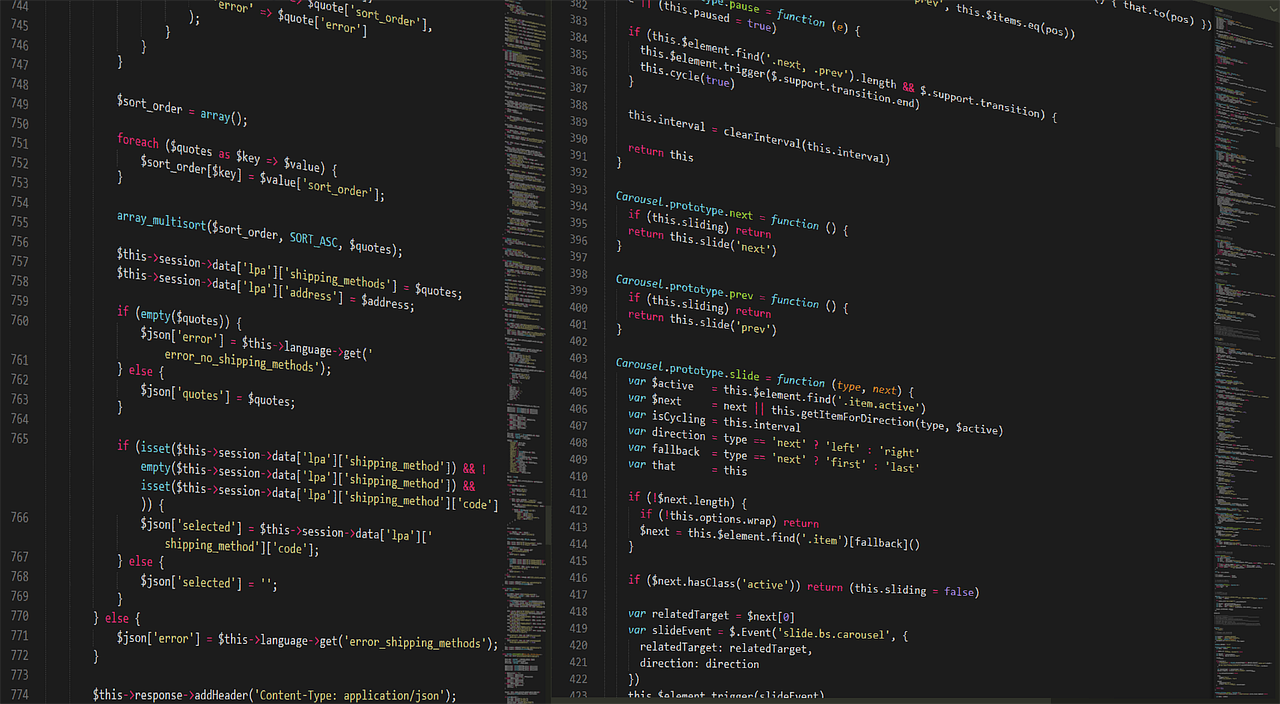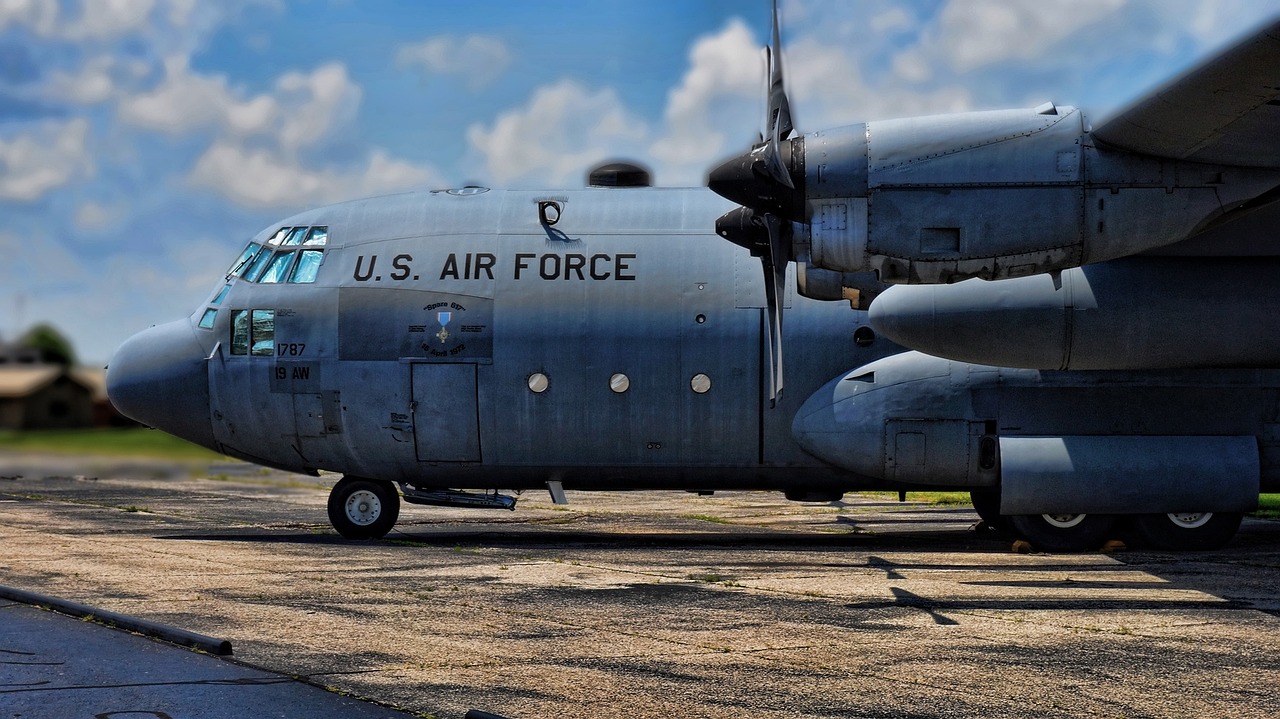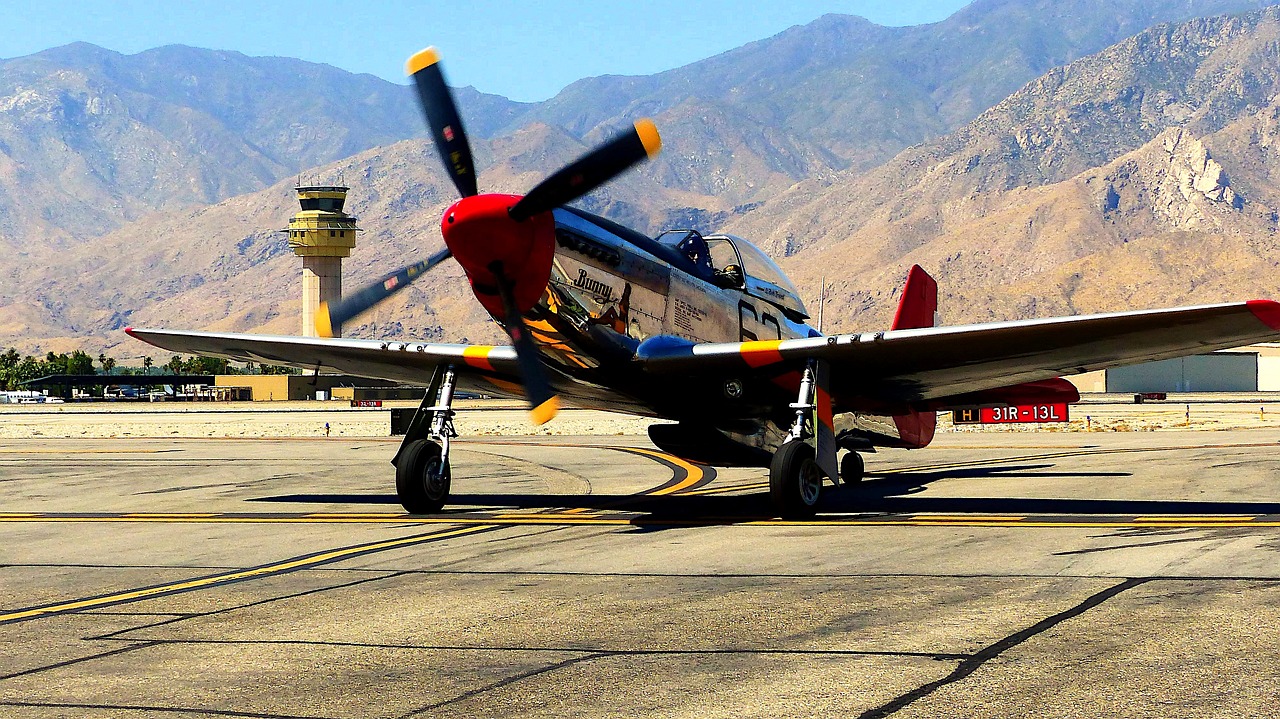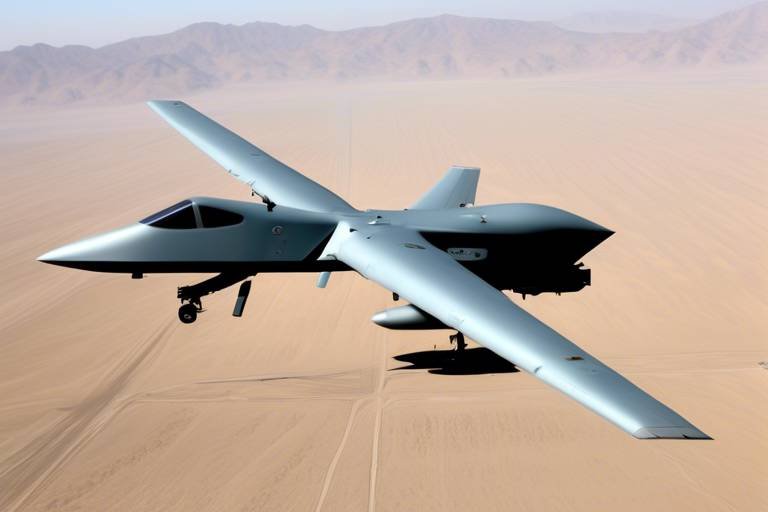Assessing the Effectiveness of the THeMIS UGV in Combat Scenarios
The landscape of modern warfare is evolving at an unprecedented pace, and unmanned systems like the THeMIS Unmanned Ground Vehicle (UGV) are at the forefront of this transformation. Designed with cutting-edge technology, the THeMIS UGV is not just another piece of military hardware; it’s a game changer. This article dives deep into its operational capabilities, exploring how it enhances tactical advantages on the battlefield.
The THeMIS UGV is a remarkable innovation in military technology, developed to serve a variety of roles in combat scenarios. Imagine a vehicle that can traverse rugged terrains, carry heavy payloads, and operate autonomously or under remote control. This is precisely what the THeMIS UGV offers. With its modular design, it can be equipped with different payloads, making it suitable for reconnaissance, logistics, and even combat support. The versatility of the THeMIS UGV is a testament to the ingenuity of modern military engineering.
To truly appreciate the effectiveness of the THeMIS UGV, it’s essential to understand its design and specifications. This vehicle is engineered with a robust chassis that allows it to withstand the rigors of combat. Here are some key specifications:
| Specification | Details |
|---|---|
| Length | 3.5 m |
| Width | 2.0 m |
| Weight | 1,500 kg |
| Payload Capacity | Up to 1,000 kg |
This table illustrates the impressive specifications that allow the THeMIS UGV to perform effectively in various combat situations. Its lightweight yet durable construction ensures that it can navigate through challenging environments while carrying essential equipment.
The operational capabilities of the THeMIS UGV highlight its versatility on the battlefield. One of the standout features of this vehicle is its mobility. Whether it’s navigating through mud, sand, or rocky terrains, the THeMIS UGV is designed to tackle it all. Additionally, its adaptability allows it to perform a wide range of tasks, from transporting supplies to conducting surveillance missions. The ability to operate in different combat scenarios makes it an invaluable asset to any military unit.
Mobility is a key aspect of the THeMIS UGV’s design. Equipped with advanced all-terrain capabilities, it can traverse obstacles that would stall traditional vehicles. Its speed and maneuverability are crucial during combat, where every second counts. Imagine a scenario where troops need immediate supplies or reinforcements; the THeMIS UGV can swiftly deliver what’s needed without putting soldiers in harm's way.
Another significant advantage of the THeMIS UGV is its payload options. This vehicle can be outfitted with various equipment and armaments, enhancing its functionality in combat situations. For instance, it can carry:
- Medical supplies for field hospitals
- Weapons systems for combat support
- Reconnaissance equipment for intelligence gathering
Each of these payloads enables the THeMIS UGV to adapt to the specific needs of a mission, showcasing its versatility and effectiveness.
The effectiveness of the THeMIS UGV is amplified when it is integrated with existing military systems. It can operate alongside drones, manned vehicles, and command centers, providing real-time data and support. This integration not only enhances situational awareness but also streamlines operations, making military engagements more efficient.
Analyzing real-world case studies of the THeMIS UGV's deployment provides insights into its practical effectiveness. For example, during a recent military exercise, the THeMIS UGV successfully transported supplies under simulated combat conditions, demonstrating its reliability and efficiency. The feedback from troops highlighted how the UGV reduced risk and improved logistics, proving its worth on the battlefield.
Despite its advanced features, the THeMIS UGV is not without challenges. Operational limitations, such as battery life and susceptibility to electronic warfare, can impact its effectiveness. Additionally, the need for skilled operators to manage the UGV remotely can create a bottleneck in certain situations. Recognizing these challenges is essential for ongoing improvements and adaptations.
Looking ahead, future developments for the THeMIS UGV promise enhancements in technology and functionality. Innovations in battery technology, artificial intelligence, and autonomous navigation are on the horizon. These upgrades could significantly improve the UGV's combat effectiveness, making it an even more formidable presence on the battlefield.
- What is the primary function of the THeMIS UGV? The THeMIS UGV is designed for various military applications, including logistics, reconnaissance, and combat support.
- How does the THeMIS UGV navigate difficult terrains? It is equipped with advanced all-terrain capabilities, allowing it to traverse obstacles that traditional vehicles cannot.
- What are the limitations of the THeMIS UGV? Some limitations include battery life, susceptibility to electronic warfare, and the need for skilled operators.
- What future improvements are expected for the THeMIS UGV? Future developments may include enhancements in battery technology, AI capabilities, and autonomous navigation.

Introduction to THeMIS UGV
The THeMIS Unmanned Ground Vehicle (UGV) represents a significant leap forward in military technology, designed to operate in the most demanding combat environments. Developed by Milrem Robotics, this innovative vehicle is not just a piece of machinery; it’s a game-changer on the battlefield. Imagine a robotic companion that can navigate treacherous terrains, carry heavy loads, and provide real-time intelligence—all while keeping soldiers out of harm's way. Sounds like something out of a sci-fi movie, right? Yet, it's very much a reality today.
The THeMIS UGV is engineered for versatility and resilience, making it suitable for a variety of roles in military operations. Whether it’s reconnaissance, logistics support, or direct engagement, this UGV can adapt to the mission at hand. With its modular design, the THeMIS can be outfitted with different payloads and systems, allowing it to perform multiple tasks without the need for extensive modifications. This adaptability is crucial in modern warfare, where the ability to pivot quickly can mean the difference between mission success and failure.
One of the standout features of the THeMIS UGV is its autonomous navigation capability. Utilizing advanced sensors and AI algorithms, it can traverse complex environments with minimal human intervention. This not only enhances operational efficiency but also reduces the risk to personnel. Imagine being able to send a vehicle into a potentially hostile area, gathering intelligence or delivering supplies, all while you remain safely behind the lines. That’s the power of the THeMIS UGV.
Moreover, the THeMIS UGV is designed with a focus on interoperability. It can seamlessly integrate with existing military systems, enhancing its effectiveness in joint operations. Whether it’s working alongside drones for aerial reconnaissance or collaborating with infantry units, the THeMIS UGV serves as a force multiplier, amplifying the capabilities of the troops it supports.
As we delve deeper into this article, we will explore the various aspects of the THeMIS UGV, including its design, operational capabilities, and real-world deployment case studies. But first, let’s take a closer look at the technical specifications that make this UGV a formidable asset on the battlefield.

Design and Specifications
The THeMIS Unmanned Ground Vehicle (UGV) is a marvel of modern military engineering, designed with a focus on both functionality and adaptability. One of the standout aspects of its design is its modularity, allowing it to be configured for various missions. Whether it’s reconnaissance, logistics, or combat support, the THeMIS can be tailored to meet specific operational needs. Its robust construction ensures durability in harsh environments, making it a reliable asset on the battlefield.
In terms of technical specifications, the THeMIS UGV boasts impressive dimensions and capabilities. With a length of approximately 3.2 meters and a width of 1.9 meters, it strikes a balance between compactness and functionality. The vehicle has a weight of around 1,200 kg, which allows it to carry significant payloads while maintaining mobility. Its payload capacity can reach up to 1,000 kg, making it suitable for transporting supplies, ammunition, or even medical equipment to frontline troops.
| Specification | Value |
|---|---|
| Length | 3.2 meters |
| Width | 1.9 meters |
| Weight | 1,200 kg |
| Payload Capacity | 1,000 kg |
Another noteworthy feature of the THeMIS UGV is its advanced propulsion system, which includes electric and hybrid options. This versatility not only enhances its operational range but also allows for quieter operations, making it less detectable in combat situations. The vehicle is equipped with a sophisticated navigation system that enables it to traverse a variety of terrains, from rocky landscapes to sandy deserts, ensuring that it can adapt to the ever-changing battlefield conditions.
Moreover, the THeMIS UGV is designed with an emphasis on interoperability. It can be integrated with various payloads, including weapon systems, surveillance equipment, and even autonomous drones. This flexibility means that it can serve multiple roles within a single mission, which is a game-changer in modern warfare. The ability to switch between roles seamlessly enhances its tactical value, allowing military units to deploy it according to the evolving demands of combat.
In summary, the design and specifications of the THeMIS UGV reflect a thoughtful approach to modern military needs. Its combination of size, weight, payload capacity, and adaptability make it a formidable asset in any combat scenario. As military operations become increasingly complex, vehicles like the THeMIS will play a crucial role in shaping the future of warfare.
- What is the primary purpose of the THeMIS UGV?
The THeMIS UGV is designed for various military applications, including logistics, reconnaissance, and combat support. - How does the THeMIS UGV navigate difficult terrains?
It is equipped with an advanced navigation system that allows it to traverse a variety of terrains effectively. - Can the THeMIS UGV be armed?
Yes, it can be fitted with various weapon systems, enhancing its combat capabilities. - What is the payload capacity of the THeMIS UGV?
The THeMIS UGV has a payload capacity of up to 1,000 kg.

Operational Capabilities
The operational capabilities of the THeMIS Unmanned Ground Vehicle (UGV) are a game changer on the battlefield. Imagine a machine that can traverse rugged terrains, adapt to various combat scenarios, and execute a range of tasks—all without putting a soldier’s life at risk. The THeMIS UGV embodies this concept, offering a blend of mobility, versatility, and advanced technology that enhances modern warfare tactics.
One of the standout features of the THeMIS UGV is its exceptional mobility. Designed to navigate through challenging environments, it can maneuver over obstacles that would typically hinder traditional vehicles. Whether it's rocky landscapes, muddy fields, or urban settings, the THeMIS UGV showcases impressive agility. Its ability to maintain speed while navigating difficult terrains is crucial, as it allows for rapid deployment and repositioning during combat operations.
Let’s dive deeper into its mobility features. The THeMIS UGV is equipped with advanced suspension systems that absorb shocks and provide stability, which is essential when traversing uneven ground. This means that soldiers can rely on it to deliver supplies or perform reconnaissance without the fear of it getting stuck or damaged. In fact, the UGV can reach speeds of up to 30 km/h (approximately 18.6 mph), allowing it to keep pace with advancing troops or rapidly retreat if necessary.
Furthermore, the THeMIS UGV can be operated remotely, giving commanders the ability to control it from a safe distance. This remote operation capability not only enhances safety but also allows for real-time decision-making based on the battlefield's dynamics. Imagine being able to send a UGV into a potentially dangerous area to gather intelligence without risking lives. This is the reality that THeMIS brings to the table.
Another critical aspect of the THeMIS UGV’s operational capabilities lies in its payload options. The vehicle is designed to be modular, meaning it can be equipped with various types of equipment and armaments tailored to specific mission requirements. From surveillance systems to weaponry, the THeMIS can carry payloads weighing up to 1,000 kg (approximately 2,200 lbs). This flexibility allows military units to adapt the UGV for different roles, whether it’s logistical support, reconnaissance, or even direct fire support.
To illustrate its versatility, here’s a quick overview of some potential payload configurations:
| Payload Type | Description |
|---|---|
| Surveillance Equipment | High-resolution cameras and sensors for reconnaissance missions. |
| Weapon Systems | Light or medium machine guns for direct engagement with enemy forces. |
| Logistical Support | Transporting supplies, ammunition, and medical equipment to troops in the field. |
| Electronic Warfare Tools | Systems designed to disrupt enemy communications and radar. |
This adaptability not only increases the UGV's effectiveness in various combat situations but also enhances the overall operational capability of military forces. By incorporating the THeMIS UGV into their strategies, commanders can optimize their resources and respond more effectively to evolving threats on the battlefield.
In summary, the operational capabilities of the THeMIS UGV are nothing short of revolutionary. With its robust mobility features and versatile payload options, it is poised to play a critical role in modern warfare. As military tactics continue to evolve, the THeMIS UGV stands at the forefront, ready to meet the challenges of tomorrow's combat scenarios.
- What is the maximum speed of the THeMIS UGV? The THeMIS UGV can reach speeds of up to 30 km/h (approximately 18.6 mph).
- How much weight can the THeMIS UGV carry? It has a payload capacity of up to 1,000 kg (approximately 2,200 lbs).
- Can the THeMIS UGV operate in urban environments? Yes, it is designed to navigate various terrains, including urban settings.
- Is the THeMIS UGV remotely operated? Yes, it can be controlled remotely, ensuring the safety of operators.

Mobility Features
The mobility features of the THeMIS UGV are nothing short of revolutionary, making it a game-changer on the battlefield. Imagine a vehicle that can traverse the rugged terrains of a war zone, from rocky mountains to sandy deserts, all while maintaining speed and agility. The design of the THeMIS UGV incorporates advanced technologies that allow it to navigate a variety of landscapes with ease. With its robust wheels and low center of gravity, this unmanned ground vehicle is engineered to handle challenging conditions that would typically hinder traditional military vehicles.
One of the standout aspects of the THeMIS UGV is its impressive terrain navigation capabilities. Equipped with adaptive suspension systems, it can absorb shocks and bumps, ensuring stability and comfort for any payload it carries. Whether it’s climbing steep inclines or maneuvering through dense vegetation, the THeMIS UGV is built to tackle obstacles that might otherwise stall operations. It’s like having a versatile athlete on your team, capable of running, jumping, and dodging through any obstacle course presented in combat.
Speed is another critical factor in the UGV's mobility. The THeMIS can reach speeds of up to 30 km/h (approximately 18.6 mph) on flat surfaces, which is impressive for a vehicle of its size and capabilities. This agility allows it to reposition quickly during combat, providing tactical advantages that can mean the difference between success and failure in a mission. The ability to swiftly navigate the battlefield not only enhances operational efficiency but also increases the safety of personnel by reducing their exposure to enemy fire.
Moreover, the THeMIS UGV is designed with manoeuvrability in mind. Its compact size allows for tight turns and quick direction changes, making it an invaluable asset in urban warfare scenarios where space is limited. The vehicle can easily weave through narrow streets and alleys, positioning itself strategically without the need for extensive planning or large-scale maneuvers. This flexibility is akin to a dancer gracefully moving through a crowded room, effortlessly avoiding obstacles while maintaining poise and purpose.
In addition to its physical features, the THeMIS UGV is equipped with advanced navigation systems that utilize GPS and real-time data analytics. This technology ensures that it can not only follow pre-programmed routes but also adapt to dynamic battlefield conditions. If an unexpected obstacle arises, the UGV can recalibrate its path, ensuring that it remains on course. This level of adaptability is crucial in combat situations where every second counts.
To summarize, the mobility features of the THeMIS UGV are designed to provide unmatched versatility and effectiveness in combat scenarios. Its ability to navigate various terrains, maintain high speeds, and maneuver in tight spaces makes it an essential tool for modern military operations. As warfare continues to evolve, the importance of such advanced mobility cannot be overstated—it is the lifeblood of tactical success in an ever-changing landscape.
- What types of terrains can the THeMIS UGV navigate?
The THeMIS UGV can navigate a wide range of terrains, including rocky, sandy, and urban environments, thanks to its advanced suspension and wheel design.
- How fast can the THeMIS UGV travel?
The THeMIS UGV can reach speeds of up to 30 km/h (approximately 18.6 mph), allowing it to reposition quickly in combat situations.
- Can the THeMIS UGV adapt to changing battlefield conditions?
Yes, the THeMIS UGV is equipped with advanced navigation systems that allow it to adapt its path in real-time based on dynamic conditions.

Payload Options
The THeMIS Unmanned Ground Vehicle (UGV) stands out not just for its mobility and operational capabilities but also for its impressive . In the dynamic environment of modern warfare, the ability to adapt and carry a variety of equipment is crucial. The THeMIS UGV can be equipped with an array of payloads, making it a versatile asset on the battlefield.
One of the most exciting aspects of the THeMIS UGV is its modular design, which allows for easy customization based on mission requirements. This adaptability means that the UGV can switch between different payloads quickly, ensuring that it can respond to various combat scenarios effectively. Here are some of the key payload categories:
- Surveillance Equipment: The UGV can carry high-resolution cameras and sensors that provide real-time intelligence and situational awareness.
- Weapon Systems: It can be outfitted with light to medium weaponry, including machine guns and missile systems, enhancing its combat capabilities.
- Logistics Support: The THeMIS UGV can transport supplies, ammunition, and medical equipment to troops in the field, reducing the risk to human life.
- Electronic Warfare Tools: Advanced electronic warfare systems can be integrated to disrupt enemy communications and radar.
Moreover, the UGV's payload capacity is designed to support a variety of mission profiles. For instance, it can handle up to 600 kg of equipment, which is significant when considering the weight of military gear. This capacity allows for a combination of different payloads to be deployed simultaneously, maximizing its utility. The table below summarizes the key specifications of the THeMIS UGV's payload options:
| Payload Type | Weight Capacity | Functionality |
|---|---|---|
| Surveillance Equipment | Up to 150 kg | Real-time intelligence gathering |
| Weapon Systems | Up to 250 kg | Engagement of enemy targets |
| Logistics Support | Up to 600 kg | Transport of supplies and equipment |
| Electronic Warfare Tools | Up to 200 kg | Disruption of enemy systems |
In summary, the payload options of the THeMIS UGV significantly enhance its effectiveness in combat scenarios. The ability to carry diverse equipment not only provides tactical advantages but also ensures that military units can adapt to the ever-changing landscape of warfare. As technology advances, we can expect even greater versatility and capability from the THeMIS UGV, further solidifying its role as a vital component of modern military operations.
Q: What types of missions can the THeMIS UGV support?
A: The THeMIS UGV can support a wide range of missions, including surveillance, logistics, combat support, and electronic warfare, thanks to its modular payload options.
Q: How does the THeMIS UGV enhance troop safety?
A: By taking on dangerous tasks such as reconnaissance and transport of supplies, the THeMIS UGV reduces the risk to human soldiers in high-threat environments.
Q: Can the payloads be changed quickly in the field?
A: Yes, the modular design of the THeMIS UGV allows for quick changes to payloads, enabling it to adapt to different mission requirements on the fly.

Integration with Military Systems
The integration of the THeMIS Unmanned Ground Vehicle (UGV) with existing military systems is not just a luxury; it's a necessity in modern warfare. As military operations become increasingly complex, the ability to seamlessly incorporate advanced technologies like the THeMIS UGV into existing frameworks can significantly enhance operational efficiency and effectiveness. Imagine a battlefield where soldiers are supported by a robot that can communicate with drones, artillery units, and command centers in real-time. That’s the future we’re stepping into, and the THeMIS UGV is at the forefront of this transformation.
One of the standout features of the THeMIS UGV is its compatibility with a variety of military systems. This adaptability allows it to serve multiple roles, from reconnaissance to logistics support. For instance, when deployed alongside drone technology, the THeMIS UGV can act as a mobile command center, relaying real-time data from the battlefield. This capability is crucial in situations where every second counts, as it allows commanders to make informed decisions based on accurate and timely information.
Moreover, the THeMIS UGV can be equipped with various payloads, including weapon systems, surveillance equipment, and medical supplies. This versatility means it can be integrated into different military strategies, whether that’s providing fire support during an offensive operation or delivering supplies to troops in remote locations. The ability to switch between roles enhances its value on the battlefield and ensures that military units can adapt to changing circumstances quickly.
To illustrate the integration capabilities of the THeMIS UGV, consider the following table that outlines its compatibility with various military systems:
| Military System | Integration Capability | Potential Applications |
|---|---|---|
| Drones | Real-time data relay | Surveillance, target acquisition |
| Artillery Units | Fire support coordination | Precision strikes, logistical support |
| Command Centers | Secure communications | Mission planning, situational awareness |
| Medical Units | Emergency supply delivery | Evacuation, medical resupply |
In addition to these capabilities, the THeMIS UGV is designed with advanced communication systems that ensure it can operate effectively in joint operations with other military assets. This is vital in scenarios where multiple branches of the military are involved, as it allows for coordinated efforts that can lead to more successful outcomes. The synergy created by integrating the THeMIS UGV with other systems not only enhances effectiveness but also minimizes risks for personnel on the ground.
However, it’s essential to recognize that the integration of the THeMIS UGV into military systems is not without its challenges. Issues such as cybersecurity threats, the need for standardized protocols, and the requirement for extensive training for personnel can complicate this process. Nevertheless, the benefits of having a highly integrated battlefield support system far outweigh these challenges, making the THeMIS UGV a critical asset for modern military operations.
- What is the primary function of the THeMIS UGV?
The THeMIS UGV is designed to perform various roles, including reconnaissance, logistics support, and even combat operations, depending on its payload.
- How does the THeMIS UGV communicate with other military systems?
It uses advanced communication technologies that allow it to relay information in real-time, ensuring seamless integration with drones, command centers, and other military units.
- What are the challenges of integrating the THeMIS UGV?
Challenges include cybersecurity risks, the need for standardized operational protocols, and the requirement for specialized training for military personnel.

Case Studies of Deployment
Analyzing the real-world deployment of the THeMIS Unmanned Ground Vehicle (UGV) offers a fascinating glimpse into its operational effectiveness and adaptability in various combat scenarios. One notable case study occurred during a peacekeeping mission in a conflict zone, where the THeMIS UGV was deployed to assist ground troops in reconnaissance and logistical support. The UGV was equipped with advanced sensors and communication systems, enabling it to gather crucial intelligence without putting soldiers at risk. This deployment not only showcased the UGV's capabilities but also highlighted its role in enhancing situational awareness on the battlefield.
In another instance, the THeMIS UGV was utilized in an urban combat scenario, where its versatility truly shined. The vehicle was tasked with transporting supplies and providing fire support to troops engaged in close-quarter battles. Equipped with a remote-controlled weapon station, the UGV provided covering fire while navigating through narrow streets and debris-laden environments. This ability to operate in confined spaces is a game-changer, allowing military units to maintain their combat effectiveness while minimizing exposure to enemy fire.
Furthermore, a case study from a recent military exercise demonstrated the THeMIS UGV's integration with drone technology. During the exercise, the UGV was paired with aerial drones to conduct coordinated operations. The drones provided real-time aerial surveillance, directing the UGV to high-value targets while ensuring that ground forces remained informed of the evolving battlefield dynamics. This synergy between ground and aerial assets exemplifies the future of modern warfare, where unmanned systems work in tandem to achieve mission objectives.
To summarize the impact and outcomes of these deployments, consider the following table that outlines key aspects:
| Deployment Scenario | Key Features Utilized | Outcome |
|---|---|---|
| Peacekeeping Mission | Reconnaissance, Sensor Technology | Enhanced Intelligence Gathering |
| Urban Combat | Logistical Support, Fire Support | Increased Troop Safety |
| Military Exercise | Drone Integration, Real-time Coordination | Improved Operational Efficiency |
These case studies illustrate the THeMIS UGV's adaptability and effectiveness in various combat scenarios. Its ability to perform multiple roles—ranging from reconnaissance to direct support—demonstrates its value in modern military operations. As more data is collected from these deployments, the insights gained will undoubtedly lead to further enhancements in the design and functionality of the THeMIS UGV, ensuring that it remains a vital asset on the battlefield.
- What is the THeMIS UGV? The THeMIS UGV is an unmanned ground vehicle designed for military applications, capable of performing various tasks in combat scenarios.
- How does the THeMIS UGV enhance troop safety? By taking on dangerous tasks such as reconnaissance and fire support, the THeMIS UGV minimizes the risk to soldiers on the front lines.
- Can the THeMIS UGV operate in urban environments? Yes, the THeMIS UGV is designed to navigate complex urban terrains, making it effective in close-quarter combat situations.
- What types of payloads can the THeMIS UGV carry? The THeMIS UGV can be equipped with various payloads, including sensors, logistical supplies, and weapon systems, increasing its versatility on the battlefield.

Challenges and Limitations
The THeMIS Unmanned Ground Vehicle (UGV) is undoubtedly a remarkable piece of technology, but like any advanced system, it is not without its . Understanding these aspects is crucial for military strategists and operators who aim to maximize the vehicle's effectiveness in combat scenarios. One of the primary concerns revolves around the operational environment. The THeMIS UGV is designed to navigate a variety of terrains, but extreme weather conditions—such as heavy rain, snow, or sandstorms—can significantly hinder its performance. For instance, mud can bog down its wheels, while snow may limit its ability to navigate effectively.
Moreover, the vehicle's communication systems are vital for its operation. In combat situations, maintaining a strong and secure connection with command units is essential. However, electronic warfare tactics employed by adversaries can disrupt these communications, leading to potential operational failures. Imagine trying to communicate in a crowded room where everyone is shouting; that’s what it can feel like for the THeMIS UGV when faced with jamming signals.
Another significant limitation is the payload capacity. While the THeMIS UGV can carry various equipment and armaments, there are constraints on how much it can transport. This limitation means that operators must carefully consider what to equip the UGV with for each mission, often leading to compromises. For example, if a mission requires heavy firepower, it may come at the cost of carrying additional supplies or reconnaissance equipment.
Additionally, the autonomy and decision-making capabilities of the THeMIS UGV are still developing. Although it can perform a range of tasks autonomously, the vehicle’s ability to make real-time decisions in unpredictable combat scenarios is limited. This limitation necessitates human oversight, which can slow down response times. Picture a chess game where your opponent is making moves faster than you can react; that’s the kind of disadvantage operators may face when relying too heavily on the UGV.
Furthermore, the maintenance and logistical support required for the THeMIS UGV can be a burden. Like any advanced piece of machinery, it requires regular upkeep to ensure optimal performance. This need can strain military resources, especially in prolonged engagements where supply lines may be stretched thin. It’s akin to owning a high-performance car; while it can take you places quickly, it also demands frequent check-ups and premium fuel.
Lastly, there are ethical and legal considerations regarding the deployment of unmanned systems in combat. The use of UGVs raises questions about accountability and the potential for unintended consequences, such as collateral damage. Military leaders must navigate these complex issues while ensuring that the technology is used responsibly and effectively.
| Challenge | Description |
|---|---|
| Operational Environment | Performance can be hindered by extreme weather conditions. |
| Communication Systems | Electronic warfare can disrupt command communications. |
| Payload Capacity | Limited capacity necessitates careful mission planning. |
| Autonomy | Limited decision-making capabilities require human oversight. |
| Maintenance | Regular upkeep can strain military resources. |
| Ethical Considerations | Concerns about accountability and unintended consequences. |
- What are the main challenges faced by the THeMIS UGV in combat?
The main challenges include operational environment constraints, communication disruptions, limited payload capacity, and the need for maintenance. - Can the THeMIS UGV operate autonomously?
While it can perform many tasks autonomously, its decision-making capabilities are still developing, requiring human oversight. - How does weather affect the THeMIS UGV?
Extreme weather conditions like heavy rain or snow can significantly hinder its mobility and performance. - What ethical concerns are associated with the use of UGVs?
Ethical concerns revolve around accountability and the potential for collateral damage during operations.

Future Developments and Improvements
The future of the THeMIS Unmanned Ground Vehicle (UGV) is poised for exciting advancements that promise to enhance its operational capabilities even further. As military needs evolve and technology progresses, the THeMIS UGV is expected to undergo significant upgrades that will not only improve its performance but also broaden its applications in combat scenarios. One of the most anticipated developments is the integration of advanced artificial intelligence (AI) systems, which could enable the UGV to make real-time decisions and adapt to changing battlefield conditions autonomously.
Moreover, the incorporation of next-generation sensors is on the horizon. These sensors will provide enhanced situational awareness, allowing the UGV to detect threats and obstacles more effectively. Imagine a UGV that can "see" in multiple spectrums—infrared, thermal, and even through smoke or fog. This capability would significantly increase its effectiveness in urban warfare and other challenging environments.
Another critical area of improvement is the payload capacity. Future iterations of the THeMIS UGV may feature modular designs that allow for quick swapping of payloads based on mission requirements. This flexibility could include the ability to carry heavier weaponry, advanced surveillance equipment, or even medical supplies for rapid response in combat zones. The table below summarizes potential future payload options:
| Payload Type | Description |
|---|---|
| Weapon Systems | Integration of advanced weaponry for direct combat support. |
| Surveillance Equipment | High-tech cameras and sensors for intelligence gathering. |
| Logistical Support | Carrying supplies and equipment to troops in the field. |
| Medical Supplies | Transporting essential medical items for emergency response. |
In addition to these enhancements, the THeMIS UGV's connectivity with other military systems is also set to improve. Future developments may include enhanced communication protocols that allow for seamless integration with drones, manned vehicles, and command centers. This interconnectedness will enable a more cohesive operational strategy, allowing for coordinated attacks and responses that leverage the strengths of each unit involved.
Furthermore, as environmental considerations become increasingly important, future models of the THeMIS UGV may incorporate sustainable technologies. This could involve hybrid power systems that reduce the vehicle's carbon footprint while maintaining its operational range and efficiency. Such advancements would not only benefit the environment but also enhance the UGV's resilience in prolonged missions where fuel supply may be a concern.
Ultimately, the future of the THeMIS UGV is bright, filled with possibilities that could redefine how ground operations are conducted in combat. As these developments unfold, it will be fascinating to see how they impact military strategies and the overall landscape of modern warfare.
- What is the THeMIS UGV? The THeMIS UGV is an unmanned ground vehicle designed for military applications, capable of performing various tasks in combat scenarios.
- What are the key features of the THeMIS UGV? Key features include advanced mobility, payload versatility, and integration capabilities with other military systems.
- How will AI improve the THeMIS UGV? AI integration will enable real-time decision-making and adaptability, enhancing its effectiveness in dynamic combat conditions.
- What types of payloads can the THeMIS UGV carry? The THeMIS UGV can carry weapon systems, surveillance equipment, logistical support items, and medical supplies.
- What is the significance of sustainability in future UGV developments? Sustainable technologies will help reduce environmental impact and ensure operational efficiency during extended missions.
Frequently Asked Questions
- What is the THeMIS UGV?
The THeMIS UGV, or Unmanned Ground Vehicle, is a state-of-the-art military vehicle designed for various combat applications. It operates autonomously or can be remotely controlled, making it an essential asset in modern warfare.
- What are the key features of the THeMIS UGV?
This unmanned vehicle boasts impressive features such as robust mobility across diverse terrains, a customizable payload capacity, and the ability to integrate with existing military systems. Its design ensures it can handle a range of operational tasks effectively.
- How does the THeMIS UGV perform in different terrains?
The THeMIS UGV is engineered for exceptional mobility, allowing it to navigate rough terrains, including mud, sand, and rocky surfaces. Its advanced suspension system and powerful drive enable quick maneuverability, even in challenging environments.
- What types of payloads can the THeMIS UGV carry?
The THeMIS UGV can be equipped with various payloads, including surveillance equipment, weapon systems, and logistical supplies. This versatility enhances its operational effectiveness, allowing it to support multiple mission types.
- How does the THeMIS UGV integrate with other military systems?
Integration is key for the THeMIS UGV, as it can operate alongside drones, command centers, and other military technology. This interoperability ensures that it enhances situational awareness and supports coordinated operations on the battlefield.
- Can you provide examples of THeMIS UGV deployments?
Yes! There have been several notable deployments of the THeMIS UGV in real-world scenarios. These case studies showcase its effectiveness in reconnaissance missions, logistical support, and even direct combat situations, demonstrating its adaptability and reliability.
- What challenges does the THeMIS UGV face?
Despite its advanced capabilities, the THeMIS UGV encounters challenges such as potential technical malfunctions, limitations in extreme weather conditions, and the need for constant updates to stay ahead of evolving threats on the battlefield.
- What future improvements are expected for the THeMIS UGV?
Future developments for the THeMIS UGV include enhancements in AI capabilities, improved battery life, and expanded payload options. These upgrades aim to increase its effectiveness and adaptability in increasingly complex combat scenarios.



















